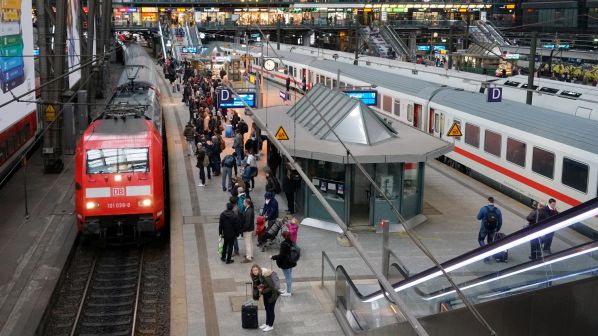THE Community of European Railway and Infrastructure Companies (CER) reports in the latest update to its Covid Impact Tracker that the effects of the Covid-19 pandemic can still be seen across passenger and freight operators in Europe, with traffic and revenue losses continuing.
Following a downturn in both passenger traffic and revenue between October 2021 and January 2022, traffic picked up in March to reach its highest level since the beginning of the pandemic.
However, passenger traffic was still down by 24% and revenue down by 20% when compared with March 2019.
CER notes that in some countries, particularly in eastern Europe, passenger-km were up in March this year but revenue remained low.
This may be due to the free travel facilities granted to those fleeing the conflict in Ukraine, as CER says that railways across Europe have issued more than 3.5 million free tickets to refugees.
Freight traffic across Europe almost reached pre-pandemic levels in December 2021, but then fell again and in March was 9% down on the same period in 2019.
Freight revenue almost stabilised to reach pre-pandemic levels between December 2021 and March 2022, but CER says that sustained revenue in the context of decreasing traffic may be hiding the effects of increasing energy costs on the final price paid by the customer, partly to the detriment of freight operator margins.
“While it is encouraging to see that rail traffic is growing, with a strong increase in long-distance leisure traffic, commuter services and business travel remain quite low compared with before the Covid crisis,” says CER executive director, Mr Alberto Mazzola.
“Rail companies continue to accumulate losses in these fields and further evolution is important for the provision of public services.”
A detailed review of how Covid-19 affected Europe’s railways in 2021 appeared in the January issue of IRJ. Website subscribers can read the article here.

